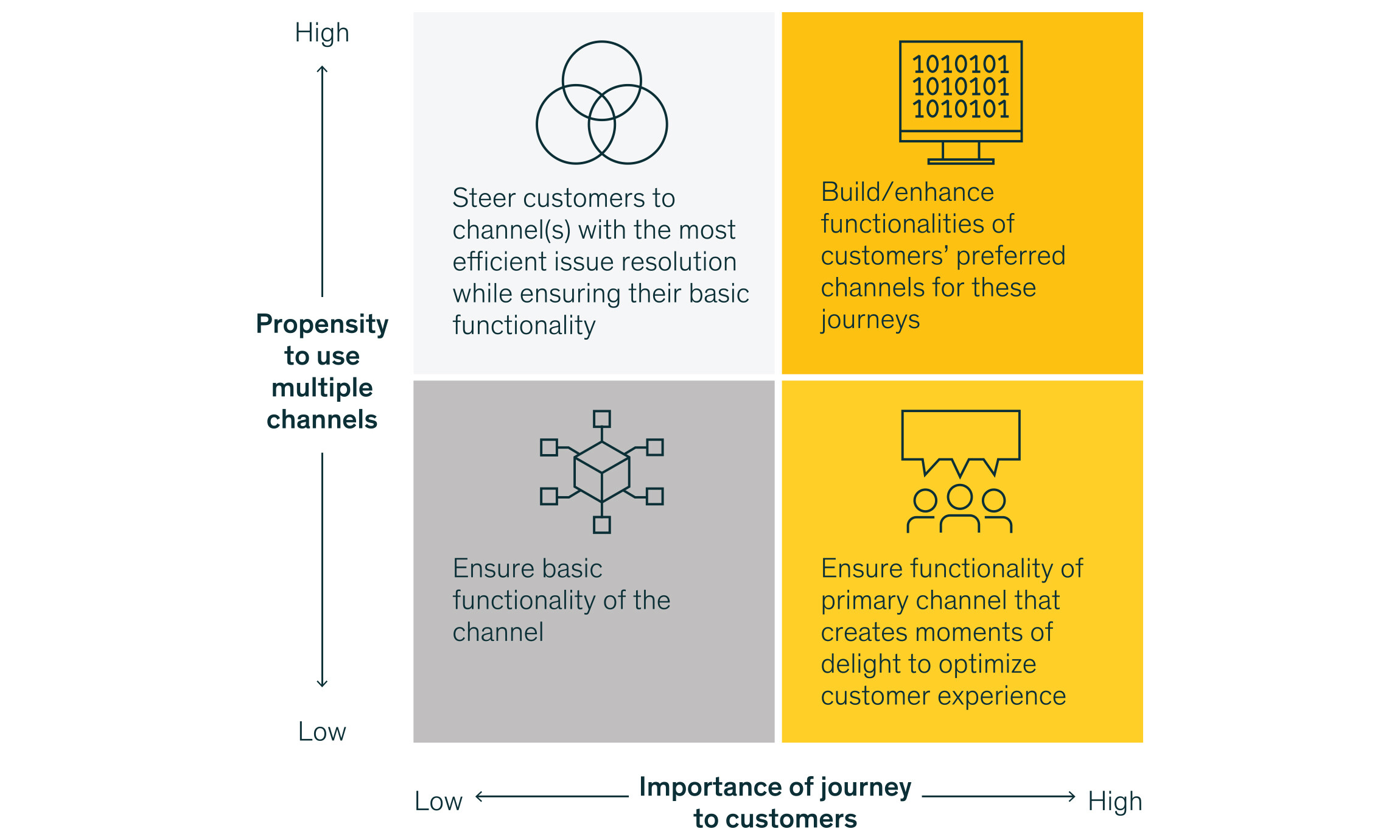
You may fall victim to certain pitfalls that prevent you from realizing the full potential of omnichannel commerce. Here are the most common ones to avoid.
When done right, omnichannel commerce can bring a bounty of benefits for brands and retailers eager to capitalize on frictionless customer experiences. After all, the purpose of omnichannel is to enable shoppers to find and buy what they are looking for no matter which channel — or how many channels — they use to get there. However, even though there are opportunities aplenty, implementing omnichannel strategies comes with various pitfalls and traps. The good news: We’re sharing the main ones and how to avoid them.

Pitfall #1 — Meeting every customer at every possible touchpoint
While “be where your customers are” is a popular omnichannel mantra, it's only partially true. Businesses that attempt to cater to every customer and touchpoint often face failure due to a lack of focus, conflicting priorities, isolated initiatives, sluggish progress and substantial costs. Instead of striving to be everywhere, it's crucial to prioritize and craft omnichannel experiences for your most significant journeys that reach the majority of your customer base.
The key to achieving success lies in identifying suitable cross-channel journeys and prioritizing them within your strategy. According to McKinsey, you can map out your customer journeys and categorize them based on two factors: The “propensity to use multiple channels” and “the journey's importance to customers.”

Journeys that rank high in both categories should take precedence in terms of your omnichannel investments and focus. By strategically selecting and prioritizing these journeys, you can pave the way for effective omnichannel implementation.
Pitfall #2 — Focusing on technology/channel rather than customer value
The advancement of technology is behind retail’s most exciting experiences. However, there are instances where brands join the hype bandwagon without truly aligning with customer needs and value. While flashy innovations may generate attention-grabbing headlines, they can often inflate costs without providing substantial value. It is essential to strike a balance between leveraging exciting advancements and ensuring they genuinely resonate with customer requirements. If you consider technologies that may work for you, start small with the methodology “crawl, walk, run”, and gradually scale up as you validate the customer value proposition.
In the “crawl” phase, you begin with a limited-scale deployment or pilot project to assess the technology's feasibility and gauge its impact on the customer experience. This initial step allows you to gather valuable insights without committing extensive resources. After validating the value proposition, you can progress to the “walk” phase: Expand the adoption of the technology by targeting specific customer segments or touchpoints, as well as refine the solution based on real-world feedback and results. Finally, in the “run” phase, you can scale up the implementation across your organization, leveraging the insights and successes from the previous phases.
Pitfall #3 — Focusing on digital and underinvesting in other customer-facing channels
While a digital-first approach is often a priority investment, many brands tend to underinvest in stores and contact centers. Unfortunately, this underinvestment in offline channels can ultimately undermine the effectiveness of their digital investments. Recognizing the inherent interplay between physical and digital touchpoints, brands should prioritize increasing their investments across all channels, particularly in their brick-and-mortar stores. By doing so, they can establish a cohesive customer experience that maximizes the value of their digital journeys.
Pitfall #4 — Focusing on channel attribution and missing out on the journey
Many companies still fall into the trap of adding new channels without a clear picture of how they should work together or if they matter to their customers. This siloed approach frequently compels organizations to address individual pain points at the channel level, such as resolving customer care calls or optimizing marketing emails, rather than seeing the big picture.
To overcome this challenge, it is crucial to adopt a unified perspective that considers the interconnectedness of channels. Rather than treating each channel in isolation, businesses should learn how these channels work together harmoniously and align with customer expectations. That way, organizations can identify overarching pain points and implement solutions that enhance the entire customer journey, promoting seamless experiences across multiple touchpoints.
Furthermore, achieving true omnichannel integration often faces obstacles due to in-store compensation structures and success metrics. This is particularly evident when an online order is fulfilled using inventory from a physical store, as store staff may be incentivized or evaluated based on that specific sale. The resulting conflict over channel attribution becomes a significant roadblock for companies striving to realize their ambitious omnichannel objectives.
Making the most of omnichannel: Composable commerce
The modularity and flexibility of composable commerce are true advantages of getting omnichannel right, as these are key to creating fluid and personalized experiences for your customers. With a composable approach, it’s easy to experiment with new touchpoints and leverage data across the shopping journey and orchestrate channels as well as marry physical and digital flows.
To learn more about how composable commerce enables your omnichannel strategy, download our Omnichannel Playbook now.